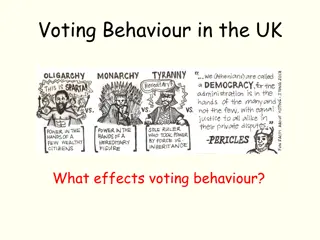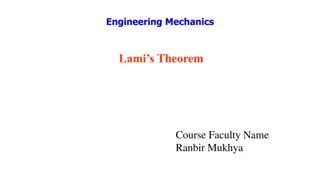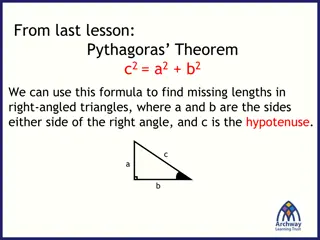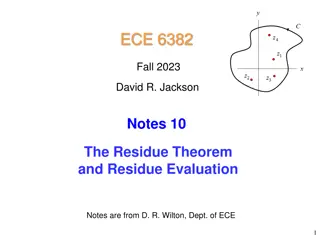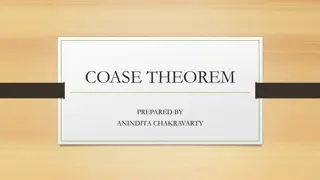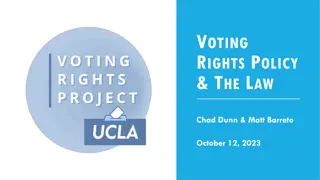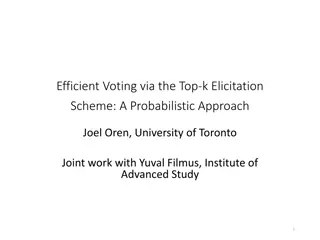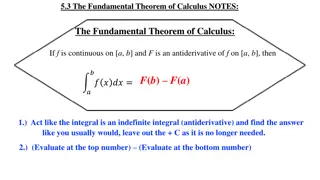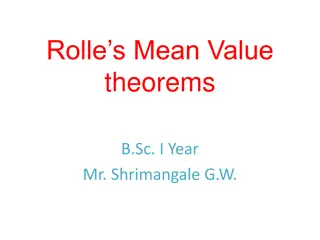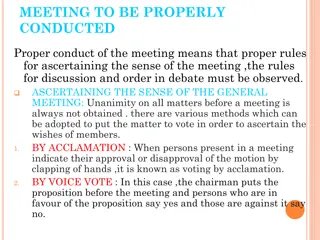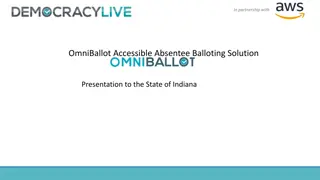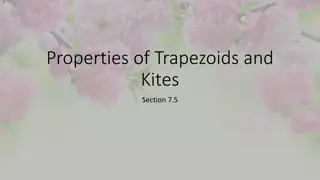Insights into Voting Systems and Arrow's Impossibility Theorem
The content delves into various voting systems, including the conditions necessary for a voting system to be fair and democratic. It discusses the challenges faced by democratic voting systems, such as Arrow's Impossibility Theorem, which states that no voting system can satisfy all desirable axioms simultaneously. The analysis highlights how certain voting systems violate key fairness principles, leading to paradoxical outcomes.
Download Presentation

Please find below an Image/Link to download the presentation.
The content on the website is provided AS IS for your information and personal use only. It may not be sold, licensed, or shared on other websites without obtaining consent from the author. Download presentation by click this link. If you encounter any issues during the download, it is possible that the publisher has removed the file from their server.
E N D
Presentation Transcript
Election Outcome Individual Rankings B D A Voting System B C C C D A B D A D A B C
Independence of Irrelevant Alternatives and Unanimity condition Transitive and unrestricted Transitive and complete Election Outcome Individual Rankings B D A Voting System B C C C D A B D A D A B C If individual rankings are transitive and unrestricted and the election outcome is transitive and complete transitive and complete then the only voting system which satisfies independence of irrelevant alternatives and the unanimity condition irrelevant alternatives and the unanimity condition is a dictatorship. If individual rankings are transitive and unrestricted If individual rankings are transitive and unrestricted and the election outcome is If individual rankings are transitive and unrestricted and the election outcome is transitive and complete then the only voting system which satisfies independence of
Independence of Irrelevant Alternatives and Unanimity condition Transitive and unrestricted Transitive and complete Election Outcome Individual Rankings B D A Voting System B C C C D A B D A D A B C Alternative reading: All democratic voting system will fail to satisfy at least one of independence of irrelevant alternatives, the unanimity condition or transitivity of the outcome thus all voting systems will sometimes result in paradoxical outcomes.
Universal domain all individually rational preference orderings are allowed as inputs into the voting system. Completeness and Transitivity the derived social preference ordering should be complete and transitive. Unanimity condition if every voter prefers X>Y then the voting system should rank X>Y. Independent of Irrelevant Alternatives the social ranking of X and Y should depend only on how individuals rank X and Y (and not on how they rank some irrelevant alternative W relative to X and Y). Non-imposition an outcome is not to be imposed which is independent of voter preferences. Non-dictatorship the voting rule cannot be based solely on one person s preferences. 1. 2. 3. 4. 5. 6. Arrow s Impossibility Theorem- No Voting System satisfies all the axioms.
None of the voting systems we look at earlier was dictatorial or imposed so they each must violate at least one and perhaps several of Arrow's other axioms. Positional vote systems like plurality rule violate the Independence of Irrelevant Alternatives axiom. (Nader was relevant). Pairwise voting with majority rule violates the Transitivity axiom (i.e. majority rule can create cycles). Positive Association was violated by runoff procedures.
Election Outcome Individual Rankings Voting System (Inputs) (Global Ranking) B D A (Aggregation Mechanism) B C C C D A B D A D A B C
Arrows theorem says the 6 axioms cannot all be true at the same time. What if we modify or drop one of the axioms. For a democratic system we don t want to drop non-imposition or non- dictatorship. So that leaves us with: 1. Universal domain all individually rational preference orderings are allowed as inputs into the voting system. 2. Completeness and Transitivity the derived social preference ordering should be complete and transitive. 3. Unanimity if every voter prefers X>Y the voting system should rank X>Y. 4. Independent of Irrelevant Alternatives the social ranking of X and Y should depend only on how individuals rank X and Y (and not on how they rank some irrelevant alternative W relative to X and Y).
Giving up UD is the same as looking for a voting system which will work well for some but not all distributions of individual preference rankings. If everyone has identical preferences, for example, then majority rule is a perfectly acceptable voting system (i.e. it will satisfy the remaining axioms). But a voting system which works well only when everyone has identical preferences is not very useful. We are thus interested in knowing how much homogeneity we need to impose on preference orderings if we want a voting system which satisfies the remaining 5 axioms. The answer is that quite a lot of homogeneity is required but perhaps not so much to be uninteresting.
If everyone's preferences are single peaked on the same single dimension then majority rule satisfies the remaining 5 axioms. Single dimension, e.g. left-right. Single-peaked each voter has an ideal point and the further away from the ideal point the lower their utility. Non single peaked voter Single peaked moderate voter Single peaked left voter Single peaked right voter Left Right
If every voters preferences are single peaked on a single dimension then majority rule with pairwise voting satisfies Arrow s Theorem. Irrelevant alternatives are irrelevant and there are no cycles because the median voter s preferences are unbeatable in pairwise voting (i.e. the median voter s preferences are a Condorcet winner) R D R R D Less Spending More Median Voter Spending
If people are homogeneous enough that everyone fits on a left-right or other single-dimension spectrum then majority rule with pairwise voting works well. The MVT is also very useful because it implies that the group will behave as if it were an individual wtih rational preferences. Thus, one can make predictions and models of voter behavior assuming the MVT such as the Meltzer- Richards model.
The completeness axiom requires given any question of the form `Is X socially preferred to Y or is Y socially preferred to X or are X and Y socially indifferent?' the voting system must return a definite answer. But suppose that X is the outcome, "tax Peter to pay Paul," and Y the outcome "tax Paul to pay Peter." A libertarian would argue that the question `Is X socially preferable to Y' has no answer (Rothbard 1956). In an ideal libertarian society the only legitimate exchanges are between individuals who agree to those exchanges. A `voting system' for such a society is nothing more than the market. The libertarian believes that the only meaning that `X is socially preferred to Y 'can have is `X was arrived at by voluntary exchange from Y'. In the libertarian view, the fact that non- voluntary exchanges cannot be ranked is not a fault of the market as a social choice mechanism it is rather an expression of the fact that there is no social preference ordering between non-voluntary exchanges. We can satisfy Arrow s Theorem if we allow that many options cannot be ranked. But is true that the two outcomes Paul kills Peter and Paul taxes Peter one penny cannot be ranked?
Transitivity requires if X>Y and Y>Z then X>Z and also if X~Y and Y~Z then X~Z Quasi-transitivity allows X~Y and Y~Z but X>Z. e.g. X is 4 grams of sugar in coffee, Y is 4.5 grams and Z is 5 grams. Surprisingly, if weaken transitivity of the outcome to quasi- transitivity then all of Arrow s other axioms can be satisfied but instead of a dictatorship we get an oligarchy. Interesting but probably not a useful path.
If we drop IIA there are lots of voting systems that satisfy Arrow s other axioms. The positional voting systems, for example, ask voters to rank their candidates from best to worst and then assign points from to best to worst. Winner of the election is the candidate who receives the most points. Plurality Rule Count Baseball Borda MVP 1 2 14 0 1 9 0 0 8
If we use a positional voting system then irrelevant candidates and preferences will matter. The Nader Problem. Defenders of these systems say that is ok because these systems are measuring relative intensity and that is desirable. But which is the right system for measuring intensity? Should first place votes get 3 points and second place 2 or should first place votes get 10 points and second place votes 4? Also are these systems really measuring intensity?
Bottom Line: No (easy?) escape! Group choice is not like individual choice and never will be. All democratic voting systems are subject to certain paradoxes and inconsistencies!







